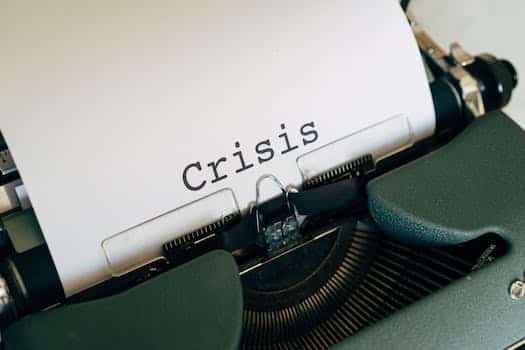Are you wondering how often you should be posting on your blog? This is a common question for bloggers, as the frequency of your posts can impact your website’s traffic and engagement. In this article, we’ll explore the factors that should be considered when deciding how often to post on your blog.
- 1. Introduction
- 1.1. Why is posting frequency important?
- 1.2. Factors to consider when deciding posting frequency
- 1.3. The impact of posting frequency on SEO
- 2. How often should you post on your blog?
- 2.1. Daily
- 2.2. 2-3 times a week
- 2.3. Once a week
- 2.4. Bi-weekly
- 2.5. Monthly
- 3. Tips for maintaining a consistent posting schedule
1. Introduction
Blogging can be a powerful tool for businesses and individuals alike. However, one of the most common questions that bloggers face is how often they should post new content on their blog. Some bloggers believe that posting every day is necessary to keep readers engaged, while others prefer to post less frequently to focus on creating higher quality content. In this article, we’ll explore the factors that can influence how often you should post on your blog and provide some tips for finding the right posting frequency for your unique needs.
1.1. Why is posting frequency important?
Posting frequency is important for several reasons. First, it helps to keep your readers engaged and interested in your blog. If you only post sporadically, your readers may lose interest and stop checking back for new content. Second, regular posting helps to establish your blog as a reliable source of information. If you consistently post high-quality content, your readers will come to trust you and rely on your blog for information. Finally, posting frequently can help to improve your search engine rankings. Search engines tend to favor websites that are updated regularly, so by posting frequently, you can improve your chances of ranking higher in search results.
1.2. Factors to consider when deciding posting frequency
When it comes to blogging, one of the most common questions is how often one should post. While there is no one-size-fits-all answer, there are several factors that should be considered when deciding on a posting frequency. These factors include the goals of the blog, the target audience, the available resources, and the competition. In this article, we will explore each of these factors in detail to help you determine the ideal posting frequency for your blog.
1.3. The impact of posting frequency on SEO
The frequency at which you post content on your blog can have a significant impact on your website’s SEO performance. Search engines like Google tend to favor websites that publish fresh and relevant content on a regular basis, as it indicates that the website is active and up-to-date. However, simply publishing content for the sake of it may not necessarily improve your SEO ranking. In this article, we will explore the impact of posting frequency on SEO and provide tips on how often you should post on your blog to maximize your website’s SEO potential.
2. How often should you post on your blog?
One of the most common questions bloggers have is how often they should post on their blog. The answer to this question is not a straightforward one, as it depends on several factors such as the type of blog, the target audience, and the blogger’s goals. However, there are some general guidelines that can help bloggers determine the ideal frequency of their posts.
Firstly, it is important to maintain a consistent schedule. Whether you decide to post once a week or twice a month, make sure you stick to it. This will help your readers know when to expect new content and establish a sense of reliability and trust with them. Additionally, posting regularly can improve your search engine rankings, as search engines tend to favor websites that update their content frequently.
Another factor to consider is the quality of your content. It is better to post high-quality content less frequently than to post mediocre content just to meet a self-imposed posting schedule. Your readers will appreciate well-researched, informative, and engaging content that adds value to their lives.
Lastly, it is important to listen to your audience. Pay attention to their feedback and engagement metrics such as comments, shares, and likes. This can help you determine whether you need to post more or less frequently, and what topics and formats resonate with them.
In conclusion, there is no magic formula for how often you should post on your blog. It depends on your specific circumstances and goals. However, by maintaining a consistent schedule, focusing on quality content, and listening to your audience, you can find the right posting frequency that works best for you and your readers.
2.1. Daily
The frequency at which you should post on your blog depends on your goals and the type of content you produce. However, it is generally recommended to post at least once a week to keep your readers engaged and your website active. Consistency is key when it comes to blogging, so choose a schedule that works for you and stick to it. Some bloggers post daily, while others post once a month. Whatever frequency you choose, make sure to provide valuable content that your audience will find interesting and informative.
2.2. 2-3 times a week
The frequency of blog posting is a topic that has been debated in the blogging world for years. Some say you should post every day, while others say once a week is enough. So, how often should you post on your blog? The answer is not clear cut and depends on a variety of factors. However, it is important to establish a consistent schedule that works for you and your audience. In this section, we will explore the different factors to consider when deciding how often to post on your blog.
2.3. Once a week
When it comes to how often you should post on your blog, there is no one-size-fits-all answer. However, it is generally recommended that you post at least once a week. This helps to keep your blog active and engaging for your readers, and also signals to search engines that your site is frequently updated with new content. Of course, if you have the time and resources to post more frequently, that can be even better for your blog’s overall success. Just be sure to maintain a consistent schedule and focus on creating high-quality, valuable content for your audience.
2.4. Bi-weekly
Bi-weekly posting is a good starting point for most bloggers. This allows you to consistently provide fresh content without overwhelming your audience or burning yourself out. However, the frequency of your posts should ultimately depend on your goals and the needs of your audience. Some blogs may require daily updates, while others may only need monthly posts. It’s important to find the right balance that works for you and your readers.
2.5. Monthly
When it comes to blogging, consistency is key. You want to establish a regular posting schedule that your readers can rely on. This not only keeps your audience engaged, but it also helps with search engine optimization. The frequency of your posts will depend on your niche, audience, and resources. Some bloggers post daily, while others post once a week or even less frequently. The important thing is to find a schedule that works for you and stick to it. Consistency is more important than frequency. If you can only commit to posting once a week, then make sure you do it every week. Remember, quality is also important. Don’t sacrifice the quality of your content for the sake of posting more often.
3. Tips for maintaining a consistent posting schedule
Consistency is key when it comes to posting on your blog. It’s important to set a schedule and stick to it, whether that means posting once a week or three times a week. Your readers will come to expect new content from you, and if you don’t deliver, they may lose interest. However, it’s also important to prioritize quality over quantity. Don’t sacrifice the quality of your posts just to meet a posting schedule. If you find yourself struggling to keep up with a frequent posting schedule, it’s better to scale back and focus on producing high-quality content that your readers will truly value. Ultimately, the frequency of your blog posts should be determined by your ability to consistently produce valuable content.
3.1. Create a content calendar
Creating a content calendar is essential for maintaining a consistent posting schedule on your blog. This calendar helps you plan out your content in advance, ensuring that you never run out of ideas or miss important dates. To create a content calendar, start by determining how often you want to post on your blog. This will depend on your goals, your audience, and your available resources. Once you have a posting schedule in mind, map out your content ideas for the upcoming weeks or months. Be sure to include a mix of evergreen content and timely topics, and consider how you can repurpose or update existing content to keep it fresh. Finally, use tools like Google Calendar or Trello to organize your content ideas and schedule posts in advance. By creating a content calendar, you can stay on track with your posting schedule and deliver valuable content to your readers on a consistent basis.
3.2. Batch create content
Maintaining a consistent posting schedule is crucial for the success of your blog. It helps to keep your readers engaged and coming back for more. But how often should you post on your blog? There is no one-size-fits-all answer to this question. The frequency of your posts will depend on your niche, your target audience, and your personal preferences. Some bloggers post daily, while others post once a week or even once a month. The key is to find a posting schedule that works for you and your readers. Here are some tips for maintaining a consistent posting schedule:
1. Create a content calendar: Plan out your posts in advance and set deadlines for yourself. This will help you stay on track and avoid last-minute scrambling.
2. Stick to a routine: If you post on the same days at the same times each week, your readers will know when to expect new content from you.
3. Repurpose old content: If you’re struggling to come up with new ideas, consider revisiting old posts and updating them with fresh information.
4. Outsource some tasks: If you’re feeling overwhelmed, consider hiring a virtual assistant or freelance writer to help with some of the work.
Remember, the most important thing is to provide value to your readers. Focus on quality over quantity, and don’t be afraid to experiment with different posting schedules until you find what works best for you.
3.3. Repurpose old content
One way to maintain a consistent posting schedule is to repurpose old content. Look through your archives and see if there are any posts that can be updated or expanded upon. You can also turn old blog posts into social media updates or create infographics or videos based on the content. By repurposing old content, you can save time and still provide valuable information to your readers.
3.4. Outsource content creation
Outsourcing content creation can be a great solution for maintaining a consistent posting schedule. By hiring a professional content writer or agency, you can ensure that your blog is consistently updated with high-quality content. Not only will this help you maintain a regular posting schedule, but it can also improve the overall quality of your blog and attract more readers. However, it’s important to choose the right content creator for your needs and establish clear expectations and guidelines for the content they produce.
3.5. Track and analyze your metrics
To maintain a consistent posting schedule, it is important to track and analyze your metrics. This will help you understand your audience’s behavior and preferences, so you can tailor your content to their needs. Use tools like Google Analytics to monitor your website traffic, bounce rates, and engagement metrics. Pay attention to which topics and formats perform best, and adjust your editorial calendar accordingly. Additionally, set realistic goals for your posting frequency and stick to them. Whether you decide to post once a day or once a week, consistency is key to building a loyal readership.
Conclusion
In conclusion, posting frequency on your blog should be determined by your goals, resources, and audience. Consistent posting is important, but quality content should always take priority over quantity.






These 10 innovative and imaginative DIY home decor ideas from [object Object] provide a refreshing approach to enhancing ones living…